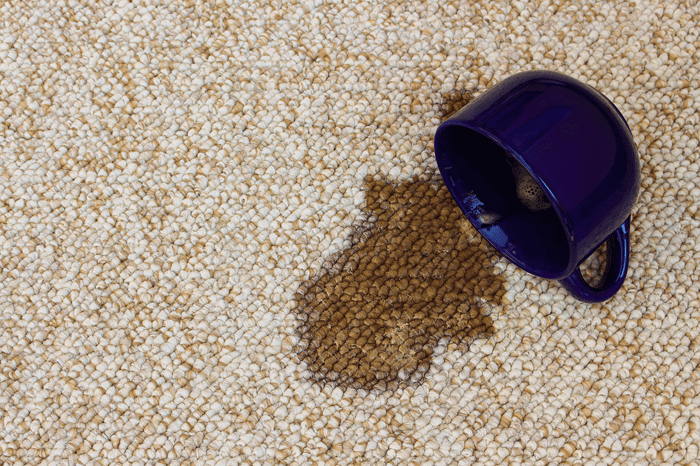
There are a few methods that can be used to decaffeinate coffee. Personally, my favorite method is: don’t.
But the most commonly used decaffeination method—by far—involves soaking coffee beans in a solvent.
The Solvent Soaking Method
That’s right, I said solvent. As in, a volatile, industrial solvent—as in, methylene chloride.
Y’know, methylene chloride… the paint stripper and metal degreaser that sounds like something Walt and Jesse would steal a barrel of on Breaking Bad.
Alternatively, the solvent ethyl acetate can be used as the caffeine removal agent. Sound familiar? You might remember that one from staring at a can of varnish, or a bottle of nail polish remover.
First, the unfortunate coffee beans are doused in water until they’re thoroughly soaked. They’re then covered in a solution containing a solvent (usually one of the two mentioned above).
The solvent draws the caffeine out of the coffee beans into the water.
Naturally (can’t believe I’m using the word “naturally” here) the solvent-water mixture takes on the aroma and taste characteristics of the coffee.
This solvent-water liquid can be reused over and over. That’s why the coffee beans don’t lose as much flavor as you might expect from being soaked in chemicals that might normally be used to strip paint. They’re actually being soaked in a concentrated coffee-flavored fluid.
*FYI, I’m not exaggerating by referring to methylene chloride as a volatile chemical. As recently as 2017, the Environmental Protection Agency tried to make its use in consumer and most commercial uses illegal based on its harmful effects on the human body, but it can still be found in scattered paint products on the shelf.
The Swiss Water Process
This is more like it. I mean, if you’re dead set on removing the natural caffeine from coffee beans, you can at least keep the paint section out of it.
The Swiss Water decaffeination process involves soaking coffee beans in water like the method above, except instead of volatile chemicals,* the coffee is just strained through activated carbon
In this method, it’s the carbon that captures and separates the caffeine from the coffee.
The CO2 Method
In the CO2 decaffeination method, the beans are—you guessed it—soaked in water.
After they’re saturated, they’re placed in a stainless steel extractor. Next, liquid carbon dioxide is blasted into the steel extractor at pressures up to 1000psi.
The CO2 binds with the caffeine molecules and pulls them out of the unroasted beans.
At the end of the process, the caffeine is in a separate chamber. Pretty cool, eh?
The downside? As you might’ve guessed, removing caffeine from coffee this way can be incredibly expensive.
How Did Your Decaf Become Decaf?
So… how do you know which method was used to remove the caffeine from your decaf?
Well, you’ll probably have to ask. If your decaf beans were soaked in paint stripper at any point, they’re probably not going to brag about it on the package.
Here’s the thing: no matter what method is used to decaffeinate coffee, there will still be some residual caffeine in it.
As we all know, decaf coffee does have one major benefit over real coffee. If you accidentally spill it, you can just replace it with water and brown food coloring.
In the mood for actual coffee? How about the strongest coffee in the world? Check out Black Insomnia.






